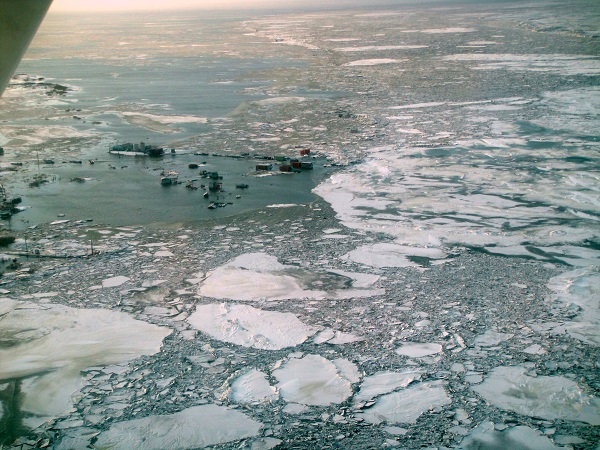Flooding impacts many coastal communities in Alaska, yet the majority do not have a complete record of flood events. For this project, DGGS is compiling a list of all known floods for individual communities. The flood height is estimated using written accounts, photographs, historical and modern imagery, and elevation models. The current risk of flooding is determined by comparing historical flood extents to current infrastructure. Each community-specific report includes a flood risk category map showing current infrastructure and previous floods.
DGGS has publications describing the overall project and results and methodology. DGGS is also developing an online tool to view flood risk categories, past flood extents, and current water level forecasts. Storm and flood photos are now hosted on the DGGS Photo Database.
DGGS has published flood assessments for several communities, but more are in the works. Creating these maps requires a recently acquired elevation dataset tied to a tidal datum, and a great deal of effort goes in to estimating past storm heights. Thanks to funding from the Borough of Indian Affairs Tribal Resilience Program, the next flood assessments will include Alakanuk, Kotlik, and Napakiak.

Flooding in Nunam Iqua during the November 2011 storm. Photo taken by Division of Homeland Security & Emergency Management.
This project was funded by the Alaska Ocean Observing System, National Oceanic and Atmospheric Administration Office for Coastal Management, and the State of Alaska.
For more information, contact Nora Nieminski and access all the related reports.